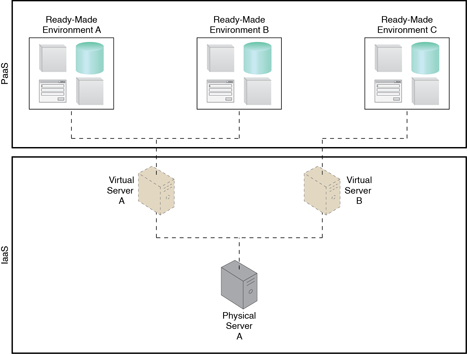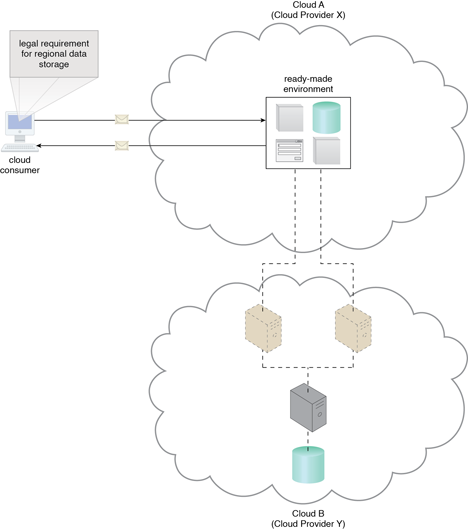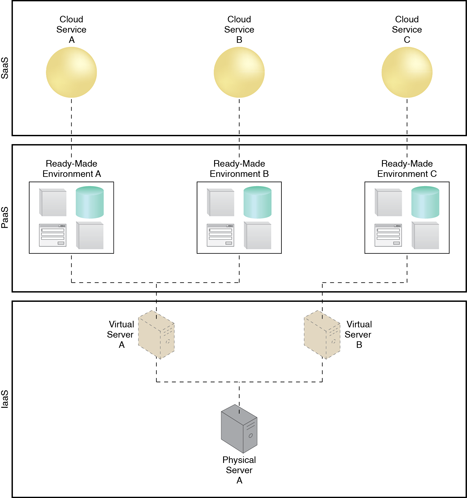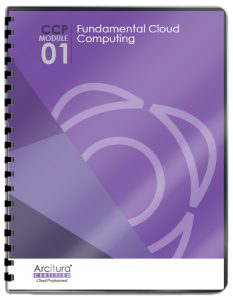Cloud Computing Patterns, Mechanisms > Basics > Cloud Delivery Models > Combining Cloud Delivery Models
Combining Cloud Delivery Models
The three base cloud delivery models comprise a natural provisioning hierarchy, allowing for opportunities for the combined application of the models to be explored. The upcoming sections briefly highlight considerations pertaining to two common combinations.
IaaS + PaaS
A PaaS environment will be built upon an underlying infrastructure comparable to the physical and virtual servers and other IT resources provided in an IaaS environment. Figure 1 shows how these two models can conceptually be combined into a simple layered architecture.
A cloud provider would not normally need to provision an IaaS environment from its own cloud in order to make a PaaS environment available to cloud consumers. So how would the architectural view provided by Figure 1 be useful or applicable? Let’s say that the cloud provider offering the PaaS environment chose to lease an IaaS environment from a different cloud provider.

Figure 1 – A PaaS environment based on the IT resources provided by an underlying IaaS environment.
The motivation for such an arrangement may be ifl?uenced by economics or maybe because the first cloud provider is close to exceeding its existing capacity by serving other cloud consumers. Or, perhaps a particular cloud consumer imposes a legal requirement for data to be physically stored in a specific region (different from where the first cloud provider’s cloud resides), as illustrated in Figure 2.

Figure 2 – An example of a contract between Cloud Providers X and Y, in which services offered by Cloud Provider X are physically hosted on virtual servers belonging to Cloud Provider Y. Sensitive data that is legally required to stay in a specific region is physically kept in Cloud B, which is physically located in that region.
IaaS + PaaS + SaaS
All three cloud delivery models can be combined to establish layers of IT resources that build upon each other. For example, by adding on to the preceding layered architecture shown in Figure 4.15, the ready-made environment provided by the PaaS environment can be used by the cloud consumer organization to develop and deploy its own SaaS cloud services that it can then make available as commercial products (Figure 3).

Figure 3 – A simple layered view of an architecture comprised of IaaS and PaaS environments hosting three SaaS cloud service implementations

